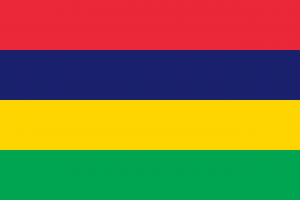Language/Morisyen/Grammar/Questions
Hi Morisyen learners! 😊
In this lesson, we will cover the grammar rules for asking questions in Morisyen. As you progress in your language learning journey, it's important to master the art of asking questions to communicate effectively with native speakers. You can also check out the Find native speakers and ask them any questions with your new knowledge!
Basic question structure[edit | edit source]
In Morisyen, asking a question is done by raising the tone of voice at the end of a statement. The word order in a question is the same as in a statement. However, you can add certain words to indicate that it's a question. The three most common words used to indicate a question are:
- Es', which is similar to "is it" or "does it". Used for yes or no questions.
- 'Ki', which is similar to "what" or "which". Used for open-ended questions.
- 'Kot', which means "where".
Let's see some examples:
| Morisyen | Pronunciation | English |
|---|---|---|
| "To pa byen?" | /to pa bjɛ̃/ | "You're not well?" |
| "Ki ou pe al?" | /ki u pɛ al/ | "Where are you going?" |
| "Es to konn avek li?" | /ɛs to kɔ̃n avɛk li/ | "Do you know him?" |
Question words[edit | edit source]
Just as in English, Morisyen uses interrogative pronouns to form more complex questions. These pronouns can be used with a number of different question words. Some of the most common question words in Morisyen include:
- Kifer - "why"
- Ki kot - "where"
- Ki lezot - "what else"
- Ki kote - "at which place"
- Ki nemero - "which number"
Here are some examples:
| Morisyen | Pronunciation | English |
|---|---|---|
| "Kifer to pe pleure?" | /kifer to pɛ plœʁ/ | "Why are you crying?" |
| "Ki kot to pe al?" | /ki kɔ̃t to pɛ al/ | "Where are you going?" |
| "Ki lezot to ena?" | /ki lɛzot to ena/ | "What else do you have?" |
Tag questions[edit | edit source]
Tag questions are used to confirm information that the speaker already believes to be true. In Morisyen, a tag question is formed by adding pa to the end of a statement. If the statement is positive, the tag question will be negative, and if the statement is negative, the tag question will be positive.
For example:
- "To kontan bondie, pa vre?" - "You're happy, aren't you?"
- "Mo pa kone, to ine per?" - "I don't know, are you afraid?"
Indirect questions[edit | edit source]
Indirect questions are questions that are embedded within a larger sentence. In Morisyen, indirect questions are formed by using the question words "ki", "ki manier", "komien", or "kan" within another sentence.
For example:
- "Mo pas konn si li pe ale, ki to panse?" - "I don't know if he's leaving, what do you think?"
- "Mo ena enn kestion. Ki manier to pu ed mwa?" - "I have a question. How can you help me?"
- "Mo touzour in demann twa, komien to ena lizyer?" - "I always ask you, how much free time do you have?"
Dialogue[edit | edit source]
To illustrate the use of questions in Morisyen, let's see a dialogue between two friends:
Person 1: "Ki ou pe al?" (Where are you going?) Person 2: "Mo pe al kasino. To pe vinn?" (I'm going to the casino. Are you coming?) Person 1: "Non, mo pa ena larzan." (No, I don't have money.) Person 2: "Es twa konn eler la-ba?" (Do you know how to get there?) Person 1: "Wi, mo konn. Ki otobis mo pu prend?" (Yes, I do. Which bus can I take?)
Conclusion[edit | edit source]
Congratulations! You now have a good understanding of how to form questions in Morisyen. Don't be afraid to practice and use these grammar rules to communicate with native speakers. Remember that to improve your Morisyen grammar, you can also use the Polyglot Club website. Find native speakers and ask them any questions!
Sources[edit | edit source]
Impressive work on finishing this lesson! Explore these additional pages to enhance your understanding: How to Use Be & Future Tense.
➡ If you have any questions, please ask them in the comments section below.
➡ Feel free to edit this wiki page if you think it can be improved. 😎

